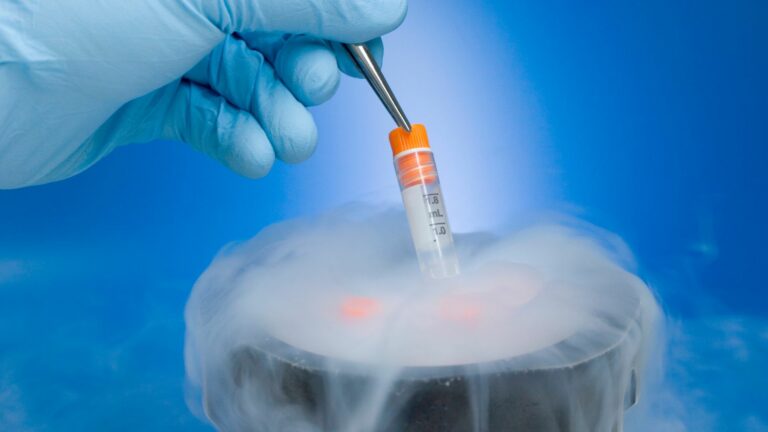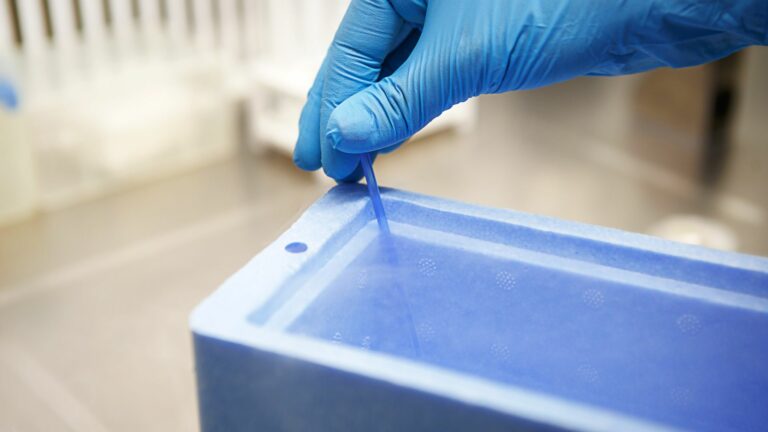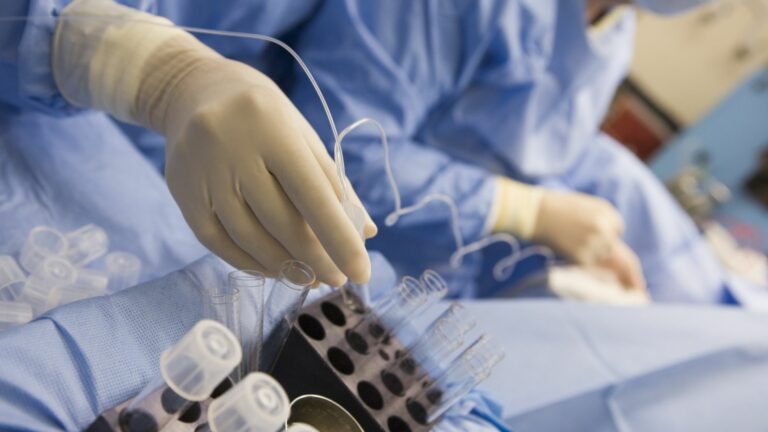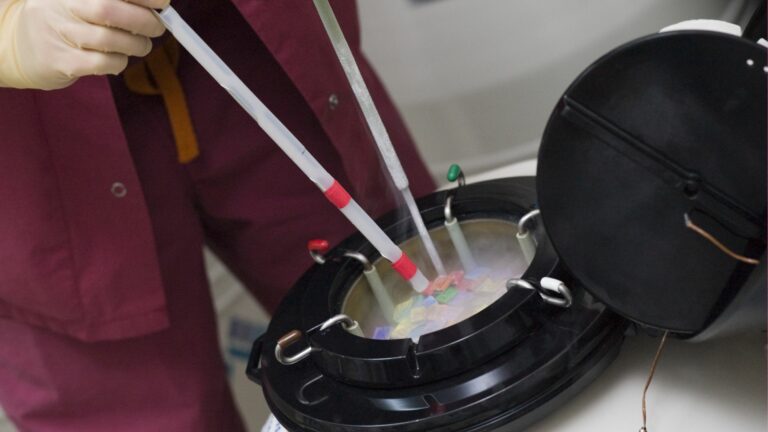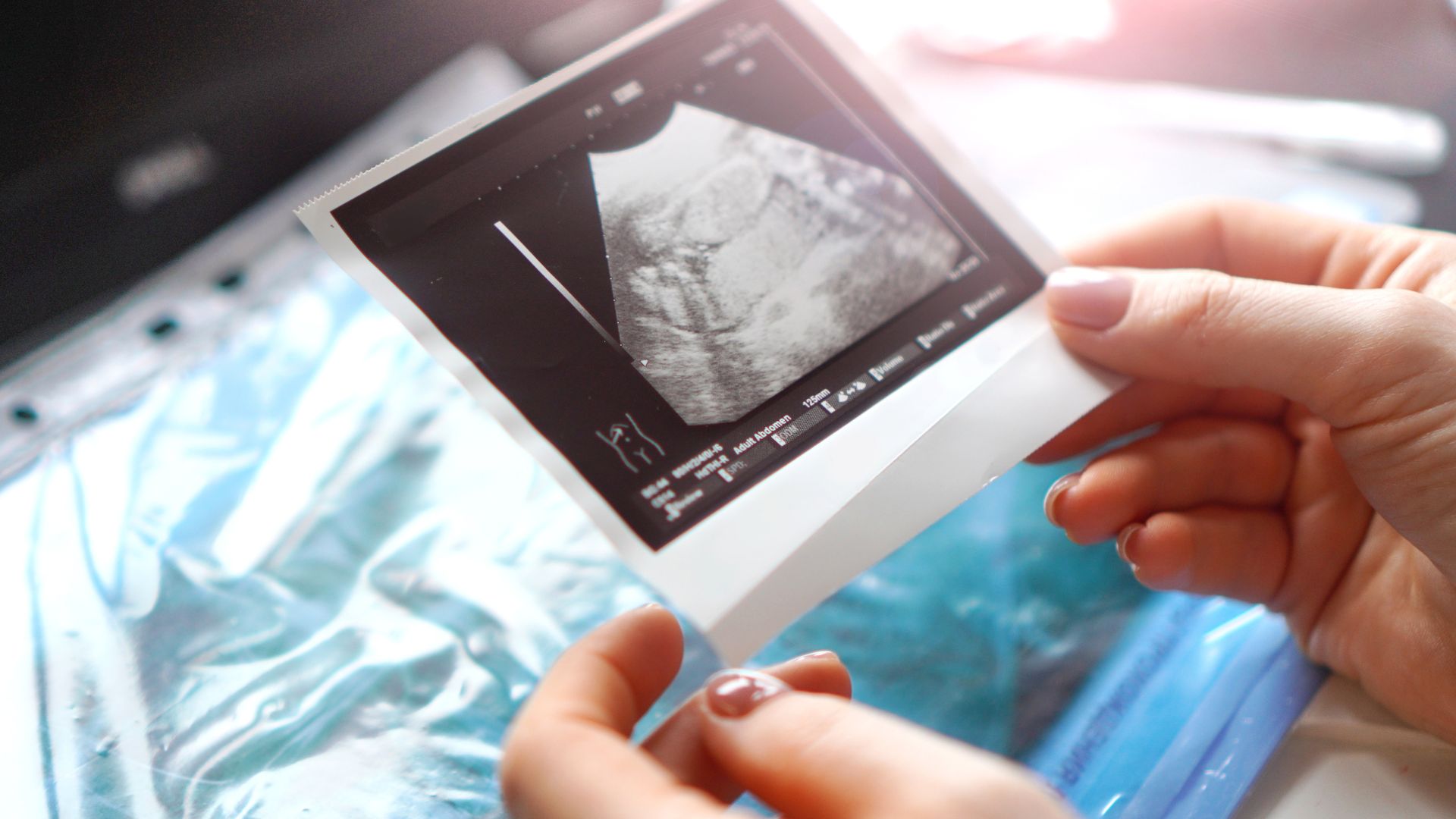
The desire to have a healthy child is an inherent and powerful force driving individuals and couples alike. In today’s evolving landscape of medical advancements, options that were previously unavailable or inaccessible are now emerging within our reach.
Among these advancements stands preimplantation genetic screening (PGS), a medical procedure offering potential insight and influence over genetic conditions that might affect offspring.
If you’re contemplating the possibility of passing on a genetic condition, have experienced ongoing challenges on your journey to parenthood, or simply want to learn more about the reproductive options available, you’re in the right place.
This comprehensive guide to PGS will serve as your primer to understand the ins and outs of this procedure. An extension of in-vitro fertilization (IVF), PGS involves screening of embryos before they’re transferred to the uterus.
We’ll provide detailed information on how it works, why you might consider it, and the ethical and financial implications involved. At the end of this guide, you’ll be well equipped to make informed decisions about your family’s future.
What is PGS and How Does It Work?
Preimplantation genetic screening, commonly known as PGS, is a procedure used in conjunction with in-vitro fertilization (IVF). It allows us to assess the genetic health of an embryo before the pregnancy is established. So, what does this process look like?
Let’s map out the critical steps involved in PGS:
- IVF and Embryo Development: PGS begins with a standard IVF process, where eggs are retrieved from the ovaries and then fertilized with sperm in a lab. The fertilized eggs, now termed as embryos, are allowed to develop for several days.
- Embryo Biopsy: Once the embryos have reached either the blastocyst stage (Day 5) or the cleavage stage (Day 3), a skilled embryologist carefully removes a few cells either from each embryo’s outer layer (trophectoderm) or the inner cell mass. This delicate process is known as an embryo biopsy and requires a high level of precision.
- Genetic Analysis: The extracted cells are then examined for chromosomal abnormalities using advanced genetic technologies.
- Results and Embryo Selection: The results of the PGS testing are evaluated, and embryos with a normal number of chromosomes are identified. Your fertility specialist will guide you in choosing the most viable embryo(s) for transfer back to the uterus.
Key Point: PGS is centered around early detection of chromosomal abnormalities. It cannot filter out every genetic disorder, but it can reliably identify a span of common chromosomal conditions leading to disorders like Down Syndrome, thereby enhancing the chances of having a healthy baby.
As we take a journey deeper into each element of PGS in the succeeding sections, remember to refer back to the foundations of the standard IVF procedure to understand better the context and purpose of PGS in your fertility journey.
Why Consider PGS?
Potential parents might pivot towards PGS for various health-related concerns and familial planning reasons. Here’s a closer look at what might lead someone to consider PGS as part of their fertility journey:
- Advanced Maternal Age: With increasing age, the possibility of chromosomal abnormalities in embryos also rises. Women over the age of 35 might opt for PGS, knowing that it can provide reassurance about the chromosomal normality of their embryos. In this way, PGS potentially increases the likelihood of a successful pregnancy and a healthy baby.
- Recurrent Miscarriage: Experiencing multiple miscarriages can be emotionally traumatic and physically taxing. PGS can play a crucial role for these couples by analyzing embryos for genetic abnormalities that could increase the risk of miscarriage, thereby providing valuable insights that might prevent future loss.
- History of Genetic Conditions: Genetic conditions in one or both partners can elevate the risk of these conditions being passed on to their children. Through PGS, it’s possible to screen embryos for specific chromosomal abnormalities and select genetically healthier embryos for IVF transfer.
- Previous IVF Failures: Couples who have not had success with previous IVF attempts might select PGS to help identify genetically viable embryos. This can increase the probability of a successful pregnancy and reduce the emotional and financial strain of repeated IVF cycles.
- Inherent Genetic Disorders at High Risk of Transmission: Genetic disorders with a high risk of transmission, such as sickle cell anemia or cystic fibrosis, can be critical factors in a couple’s PGS considerations.
It’s worth noting that while PGS offers potential benefits, it’s not without its challenges, which will be discussed in the following section, including its benefits, limitations, and cost implications.
(Learn about the entire IVF process and what to expect.)
Anticipation for a successful pregnancy can be influenced by several factors, but PGS is an additional tool at a couple’s disposal when facing particular genetic hurdles.
Understanding these motivators can clarify whether PGS aligns with your individual or collective goals for building a family.
Benefits and Limitations of PGS
Embarking on the path of PGS includes a multifaceted view of the benefits and limitations associated with the procedure. Understanding these can shape your expectations and decision-making process.
Benefits of PGS
- Increased Chance of Pregnancy Success: By selecting embryos without chromosomal abnormalities, PGS can improve the chances of a successful implantation and ongoing pregnancy, especially for certain groups such as those with advanced maternal age or a history of recurrent miscarriages.
- Decreased Risk of Miscarriage: Chromosomal issues are a leading cause of miscarriage. PGS provides an opportunity to potentially reduce this risk by ensuring that only chromosomally normal embryos are chosen for transfer.
- Avoidance of Transmitting Genetic Diseases: For those with known genetic disorders, PGS can screen out embryos that carry certain conditions, thus reducing the risk of passing these onto the child.
- Possibility of Single Embryo Transfer: PGS can increase the likelihood of success with single embryo transfer, hence decreasing the risks associated with multiple pregnancies and the associated health risks.
- Rigorous Screening Before Pregnancy: PGS can offer peace of mind by performing thorough genetic testing before pregnancy, which often provides a clear path forward in the fertility journey.
Limitations of PGS
- Not a Panacea: PGS does not guarantee a baby and is not foolproof. Some genetic abnormalities may not be detected, and chromosomally normal embryos can still encounter issues during gestation or after birth.
- Risk of Embryo Damage: Though rare, the biopsy required for PGS does pose a small risk of damaging an embryo, which could influence development.
- Additional Cost: PGS adds a significant amount to the overall cost of an IVF treatment, which might be a weighty consideration for many families.
- Accessibility and Availability: Not all IVF centers offer PGS, and access to PGS technology may vary, which can add to the burden of logistical planning and financial implications.
Considering both sides of the PGS coin is crucial in navigating the right course relative to your fertility journey.
The aim here is not to advocate for or against PGS but to provide comprehensive information to empower your decision-making process.
(Explore more about the cost factors involved in an IVF cycle and PGS.)
In our subsequent section, we’ll engage in the delicate topic of ethical considerations surrounding PGS, a must-read as you weigh the moral and societal implications of this influential technology.
Ethical Considerations of PGS
As PGS is positioned at the intersection of technology, genetics, and reproductive choices, it inevitably raises a set of ethical considerations.
It’s important to acknowledge and confront these issues, as they play a critical role in informed consent and decision-making.
Ethical Concerns and Discussions
- The Value of Embryos: Selecting embryos based on genetic testing may lead to complex discussions about the value of life and the potential for human embryos to be viewed through a lens of ‘quality.’ How society and individuals assign value to potential human life is a profound consideration.
- Potential for ‘Designer Babies’: PGS is used for avoiding chromosomal and genetic disorders, but there’s concern about the potential for its future application in selecting traits deemed ‘desirable,’ which pushes us into controversial debates about eugenics.
- Impact on Disability Community: If widely used, PGS could influence societal attitudes towards people with disabilities, with some in the disability advocacy community raising concerns about a societal shift toward a non-inclusive view of worth and normalcy.
- Socioeconomic Access: The cost of PGS, coupled with the expenses of IVF, can be prohibitive, raising concerns about creating a division where such technology is only available to those with sufficient financial resources, potentially widening existing disparities in healthcare.
- Regulatory and Policy Implications: The varying legal, cultural, and regulatory environments of different countries dictate the permissible applications of PGS. For instance, some jurisdictions may have restrictions on the use of PGS for sex selection for non-medical reasons.
Addressing these ethical concerns is a deeply personal process that often benefits from discussions with fertility specialists, bioethicists, and, when possible, a range of perspectives from different societal groups.
The intention isn’t to discourage the use of PGS, but to prompt thoughtful consideration of its broader implications.
(Consider reading up on how to cope with IVF and its numerous outcomes for a comprehensive understanding of the emotional aspects involved.)
The Financial Factor in PGS (India Specific)
The decision to pursue Preimplantation Genetic Screening (PGS) is significant – emotionally, physically, and financially.
When considering PGS in India, the financial implications can be especially daunting, but understanding the costs and resources available can ease the process.
Costs of PGS in India
- Cost of PGS Procedure: The cost of PGS can vary widely in India, influenced by the technology used, the depth of chromosomal analysis, and other associated medical services. While prices fluctuate, a general estimate ranges from ₹5,000 to ₹27,000 for each embryo tested.
- Overall IVF Costs: Remember, PGS is an additional cost on top of the standard IVF treatment, which itself can greatly vary. The total expense can be a significant factor in one’s decision to opt for PGS.
- Insurance and Coverage: Health insurance in India rarely covers PGS and IVF, meaning most couples must manage these costs out-of-pocket. It’s advisable to check with individual insurance providers for updated policies.
Navigating Financial Challenges
Despite high costs, there are ways to manage the financial burden of PGS:
- Comparing Options: Researching various fertility clinics can reveal differences in PGS pricing, helping you find a balance between cost and quality.
- Financing Plans: Some clinics offer monthly payment plans or financing to spread out the cost over time.
- Seeking Support: Nonprofit organizations and fundraisers sometimes offer aid to those undergoing fertility treatments.
Each couple’s circumstances differ, and while some may find the costs within reach, for others, handling such financial obligations can be overwhelming. It’s crucial to explore all payment options and discuss potential expenses with your fertility clinic.
(For more detailed information on managing the financial aspects of IVF and PGS, visit this resource.)
Conclusion on Costs
While the expenses related to PGS can be substantial, the decision to proceed often depends on a couple’s financial readiness, perceived value, and emotional commitment to the process.
Conduct thorough research, ask the right questions, and make your financial plans well in advance to better manage the journey ahead.
Section 6: Success Rates and What to Expect
For many, the decision to proceed with PGS hinges on understanding what success looks like and setting practical expectations.
Success Rates of PGS
While PGS does not assure pregnancy, when used judiciously, it has been shown to improve implantation rates and reduce miscarriage rates, especially in certain groups. The success of PGS also depends on a number of variables:
- Maternal Age: Younger women typically have higher success rates due to a larger proportion of chromosomally normal eggs.
- Embryo Quality: The quality of an embryo post-biopsy is a strong predictor of successful implantation.
- Lab Quality: The expertise of the lab performing PGS greatly affects the accuracy of the analysis.
Setting Expectations
Understanding the success rates of PGS involves discussing personalized outcomes with your fertility specialist. It’s equally essential to be prepared for the day-to-day process.
The PGS Timeline
- Initial Consultation: An insightful conversation with your fertility doctor about your medical history and suitability for PGS.
- Embryo Biopsy Procedure: Following your IVF cycle, select embryos will undergo a biopsy on Day 3 or 5 of development.
- Waiting for Results: Post-biopsy, there’s typically a waiting period for the genetic analysis, which may span several weeks.
- Transfer Decision: After receiving results, you’ll choose the most viable embryo(s) for transfer during a subsequent cycle.
The Takeaway
Keeping dialogue lines open with your healthcare provider throughout the PGS process is essential. Proper consultation and realistic expectations form the cornerstone of a well-informed fertility plan.
(To further understand the intricacies of IVF and PGS, delve into the common questions and answers about IVF.)
Conclusion: Making Informed Choices
Navigating the option of PGS is a journey fraught with complexity, stretching beyond the medical to touch upon personal beliefs, ethical considerations, and financial capabilities. It demands in-depth consideration of the potential upsides against the realities of its limitations.
Armed with this guide, the path toward an informed decision becomes structured. Open dialogue with fertility experts, genetic counselors, and a strong support network is crucial. Equipping yourself with the right knowledge means understanding every step of the IVF process and the nuances of PGS.
(For a deeper understanding of how PGS fits within the broader context of the IVF journey, and to address additional concerns, visit the comprehensive FAQ section on IVF.)

